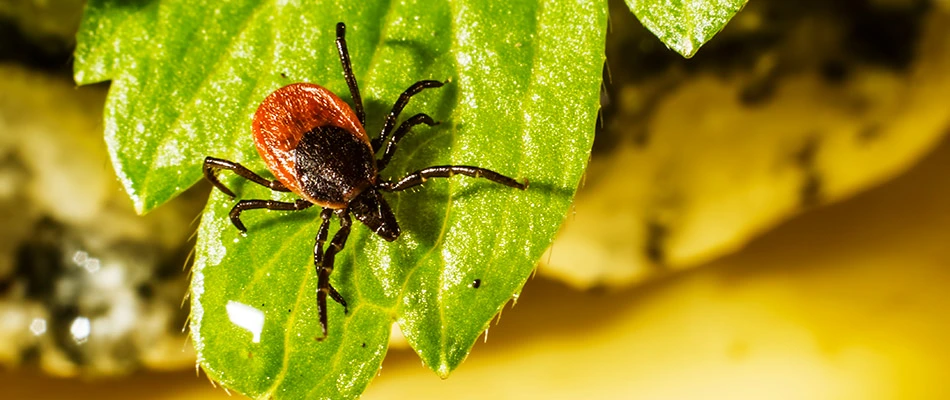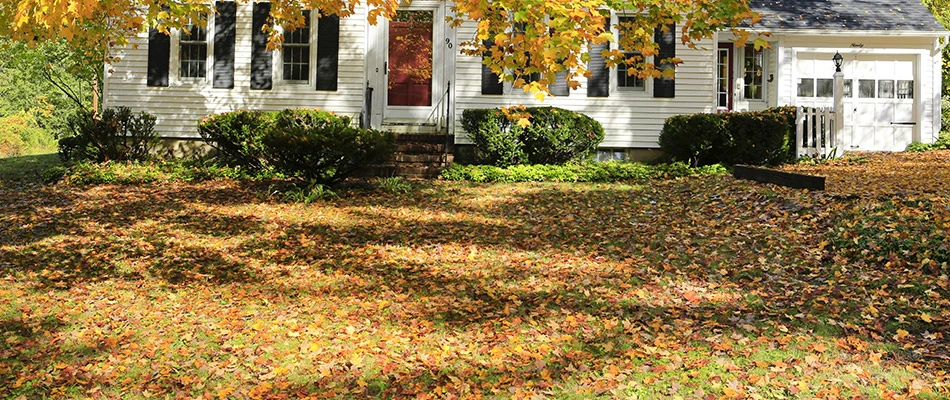While fall leaves can help your lawn in small quantities, massive leaf piles or thick blankets of leaves can harm it. This is especially the case here in Macomb, MI where our winters deliver heavy snowfall, which can intensify the harmful effects old leaf piles have on your lawn.
The best way to avoid the harmful effects of these leaf piles is to remove them before they pose a problem. If the leaves continue to fester on your lawn, you risk the possibility of inviting lawn disease, attracting pesky insects, or smothering your lawn.
What lawn diseases do leaf piles cause and why?
Fallen leaves accumulating on your lawn often lead to lawn diseases that could worsen the longer the leaves remain on your lawn. Here are a few that are common in Michigan:
Snow mold - Damp leaf piles and snow can attract two types of fungi: Microdochium nivale and Typhula incarnata, both of which cause snow mold. Both of these fungi thrive in damp, freezing environments. However, if snow mold takes hold of your lawn, you won't see the pink and white dead patches of grass until the snow melts in spring.
Brown patch - As fall leaf piles break down and release carbon into your soil, they attract the Rhizoctonia leguminicola fungus, which likes damp, nutrient-rich soil. This fungus causes brown patch. As this lawn disease progresses, your grass blades develop red spots that run together and turn your grass brown. This results in brown patches of dead or thinning grass.
Red thread - This is another lawn disease that thrives under leaf piles. Although red thread can show up as early as fall, many confuse it for pink snow mold since it sometimes doesn't appear until spring. While the two look similar, red thread causes small portions of your grass blades to develop a thread-like texture.
How do leaf piles lead to insect infestations?

Insects are attracted to leaf piles because they like the warmth, shelter, and potential food source that leaf piles provide. When they arrive, many bugs decide not to leave the damp cover that the leaves offer. These pests include:
- Centipedes
- Millipedes
- Pillbugs
- Earwigs
- Spiders
- Beetles
- Ticks
- Ants
Although many of these insects are nothing more than a common nuisance, some can harm your lawn. In the process, they can make it difficult to maintain a beautiful and healthy lawn. Of course, these pests continue breeding with a steady source of food, and unless you're proactive, they'll likely become a full-blown infestation.
Why do lingering leaf piles smother your grass?
When the blanket of leaves on your lawn gets too thick, it can smother your lawn and block your grass from receiving water, sunlight, and essential nutrients. This is especially true if the leaves get wet from rain or snow because they become heavier and can smother your lawn quicker. Smothered grass has a difficult time growing come spring. Likewise, depending on how young the grass is, smothering your lawn could even cause your grass to die.
After removing old leaf piles from your lawn, it helps to schedule follow-up fertilization and weed control treatments.
Rid your lawn of those old leaf piles with our leaf removal services. Call us today!
Don't let old festering leaves or the problems they cause harm your lawn. We know removing them can be a tedious and time-consuming process, but addressing them now can save you from more significant issues down the road. We've been helping residential, commercial, and HOA properties with our leaf removal and fall yard cleanup services since 2014.
If you're in Macomb, Shelby, Chesterfield, or nearby in Michigan, we can help you too. If the leaves have already started piling up, let us be your leaf removal partner. Call us today at (586) 200-0855 to schedule our fall leaf removal service.




Comments (0)
Thanks for your comment!
Thanks for your feedback! Your comments have been successfully submitted! Please note, all comments require admin approval prior to display.
Error submitting comment!
There is a problem with your comment, please see below and try again.